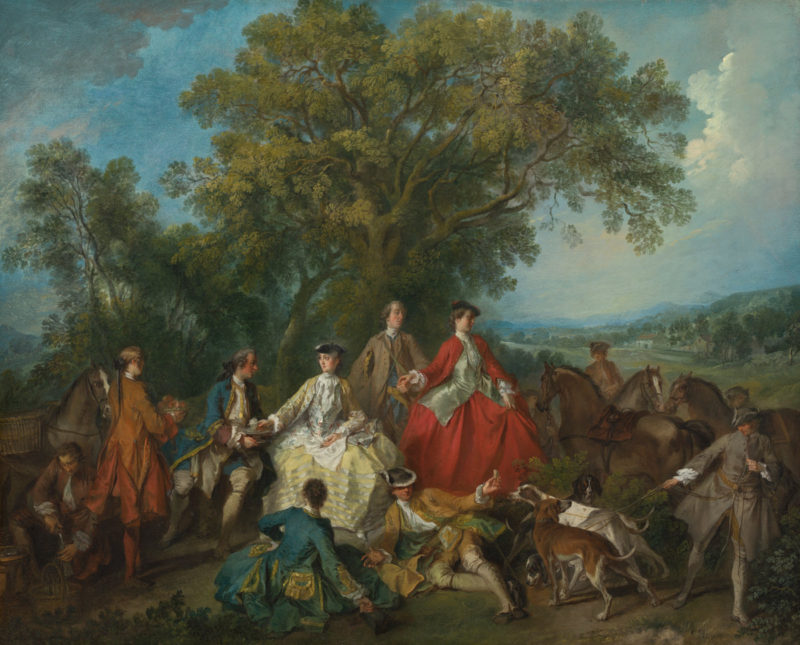 Because the scene is obviously a picnic, the National Gallery of Art’s title, The Picnic after the Hunt, is apt. But Lancret would not have used pique-nique because the French denoted it as an indoor dinner. More likely, he would have titled un repas de chasse, as he...
Because the scene is obviously a picnic, the National Gallery of Art’s title, The Picnic after the Hunt, is apt. But Lancret would not have used pique-nique because the French denoted it as an indoor dinner. More likely, he would have titled un repas de chasse, as he...
 Montagu “ate a cold loaf,” which suggests a synonym for picnicking, a term that has not survived. She wrote the word in her diary for 1752 while visiting a ruined 12th Century priory in Berkshire being remolded as her residence. Emily J. Climenson, editor of Montagu’s...
Montagu “ate a cold loaf,” which suggests a synonym for picnicking, a term that has not survived. She wrote the word in her diary for 1752 while visiting a ruined 12th Century priory in Berkshire being remolded as her residence. Emily J. Climenson, editor of Montagu’s...
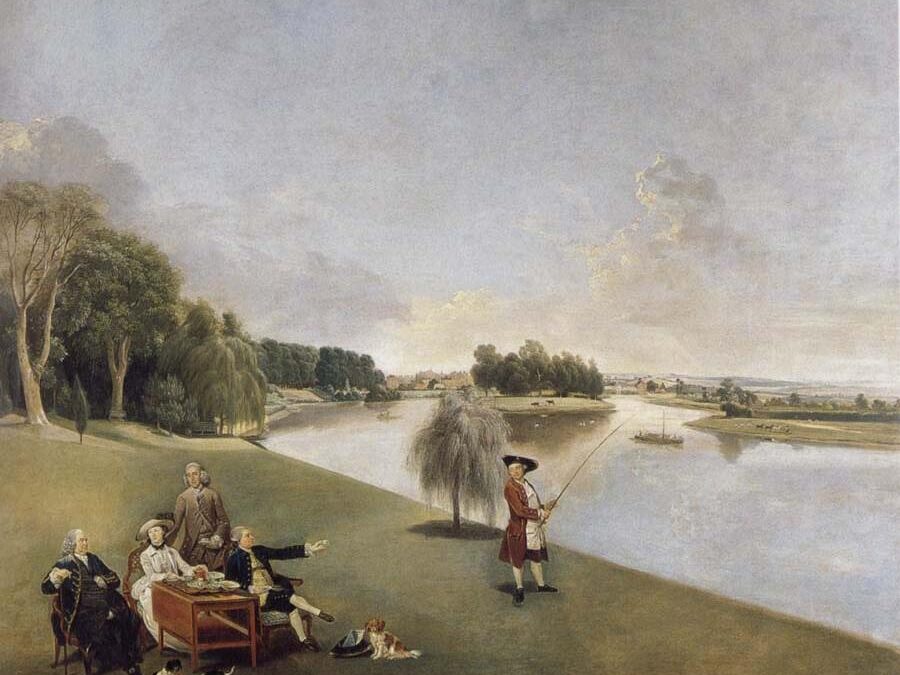 Zoffany’s The Garden of Hampton House, with Mr and Mrs David Garrick Taking Tea is a conversation portrait of the Garricks on their lawn in Twickenham. The occasion is a tea party. The group includes Garrick, gesturing towards his brother David, with the fishing rod,...
Zoffany’s The Garden of Hampton House, with Mr and Mrs David Garrick Taking Tea is a conversation portrait of the Garricks on their lawn in Twickenham. The occasion is a tea party. The group includes Garrick, gesturing towards his brother David, with the fishing rod,...
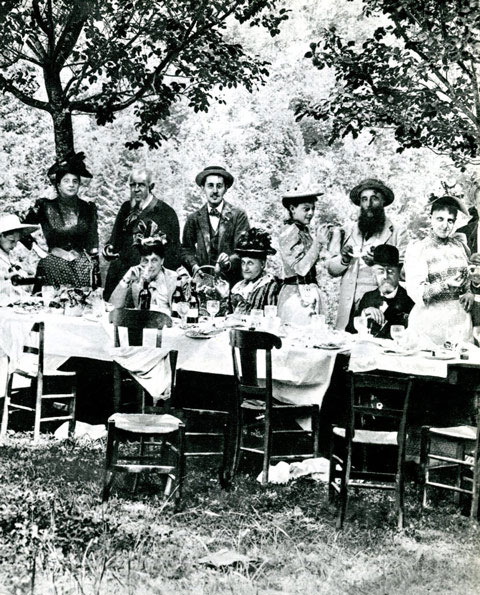 Proust’s Within a Budding Grove [aka In the Shadow of Young Girls in Flower] is sometimes remembered for young Marcel’s picnics on the bluffs at Balbec, a fictional town in Normandy. (Proust does not use pique-nique because this is an outdoor meal.) With a...
Proust’s Within a Budding Grove [aka In the Shadow of Young Girls in Flower] is sometimes remembered for young Marcel’s picnics on the bluffs at Balbec, a fictional town in Normandy. (Proust does not use pique-nique because this is an outdoor meal.) With a...
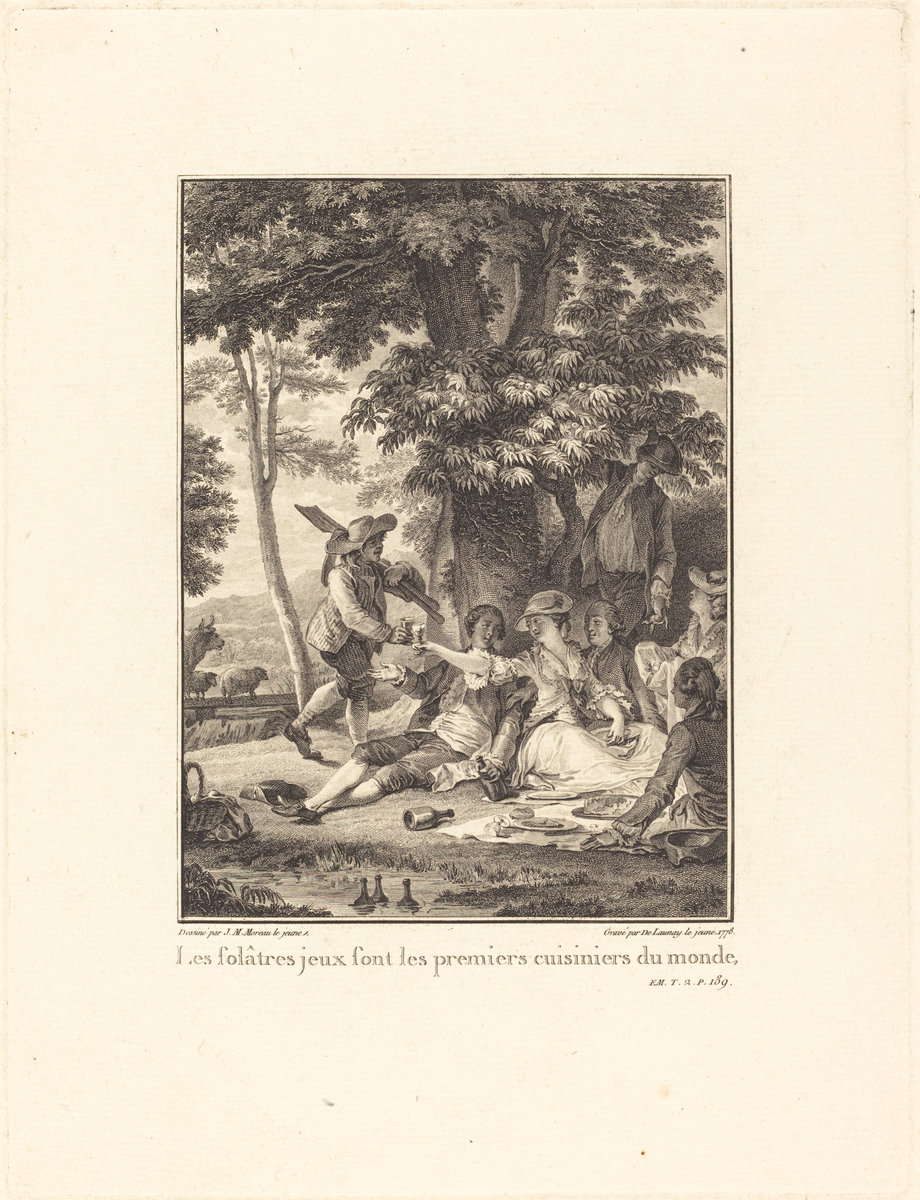 Rousseau was not thinking of a pique-nique when he wrote, “The turf will be our chairs and table, the banks of the stream our side-board, and our dessert is hanging on the trees.” He knew that pique-nique was an indoor meal for which friends shared the...
Rousseau was not thinking of a pique-nique when he wrote, “The turf will be our chairs and table, the banks of the stream our side-board, and our dessert is hanging on the trees.” He knew that pique-nique was an indoor meal for which friends shared the...
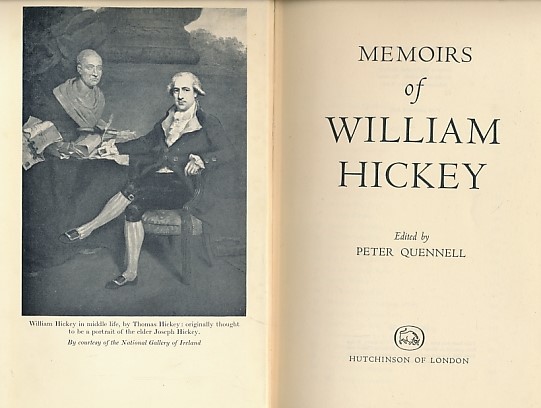 Hickey’s Memoirs included a picnic luncheon in Westminster Abbey during the coronation of George III in September 1762. His memory of the coronation is humorous if it’s true. Many of Hickey’s memories are lascivious, and he was regarded as a rake....
Hickey’s Memoirs included a picnic luncheon in Westminster Abbey during the coronation of George III in September 1762. His memory of the coronation is humorous if it’s true. Many of Hickey’s memories are lascivious, and he was regarded as a rake....
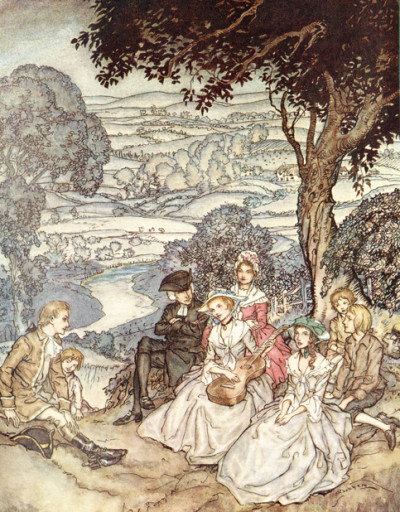 Goldsmith does not use the word picnic, but two such episodes in The Vicar of Wakefield exist. They are so obvious that in English Picnics, Georgina Battiscombe credits with the first “picnics” in English literature. If only he had used the word! Goldsmith...
Goldsmith does not use the word picnic, but two such episodes in The Vicar of Wakefield exist. They are so obvious that in English Picnics, Georgina Battiscombe credits with the first “picnics” in English literature. If only he had used the word! Goldsmith...
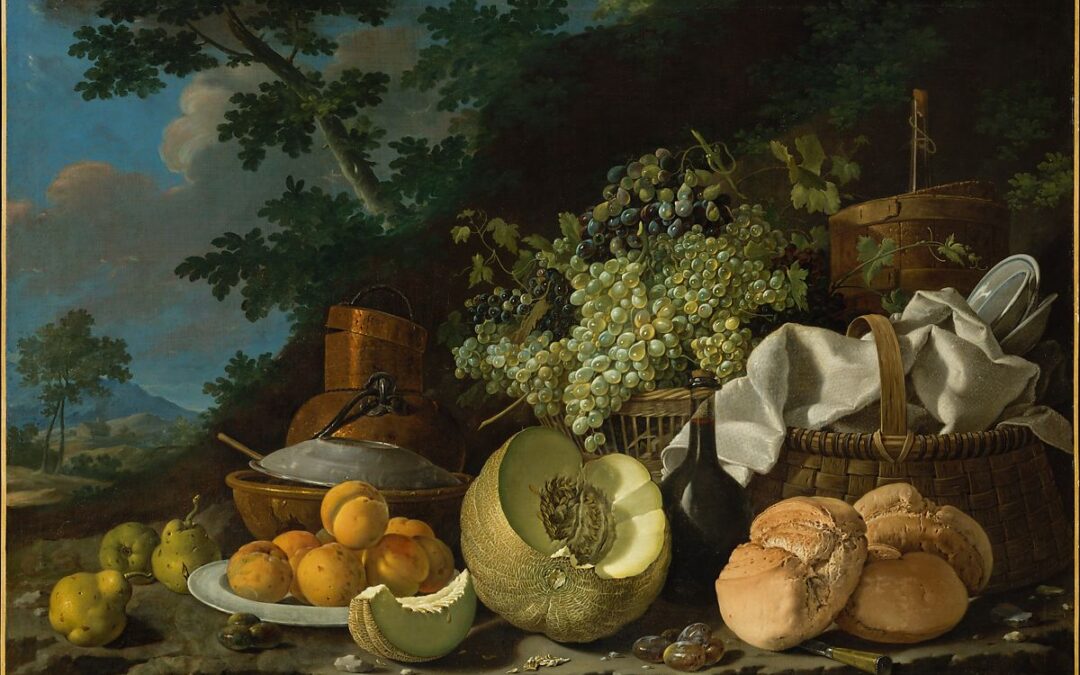 Meléndez was a painter of food, perhaps obsessively so. La Merienda or The Afternoon Meal is among his many still life works there is food ready to be eaten but without any people about to do so. In this instance, it’s a picnic without picnickers though someone...
Goldsmith’s “Retaliation” left unfinished at his death, alludes to dining “en piquenique” with mentioning the word. Motivated for being slighted by his friends, Goldsmith decided to get even at the dinner table. Attempting to get even with slights endured from...
Meléndez was a painter of food, perhaps obsessively so. La Merienda or The Afternoon Meal is among his many still life works there is food ready to be eaten but without any people about to do so. In this instance, it’s a picnic without picnickers though someone...
Goldsmith’s “Retaliation” left unfinished at his death, alludes to dining “en piquenique” with mentioning the word. Motivated for being slighted by his friends, Goldsmith decided to get even at the dinner table. Attempting to get even with slights endured from...
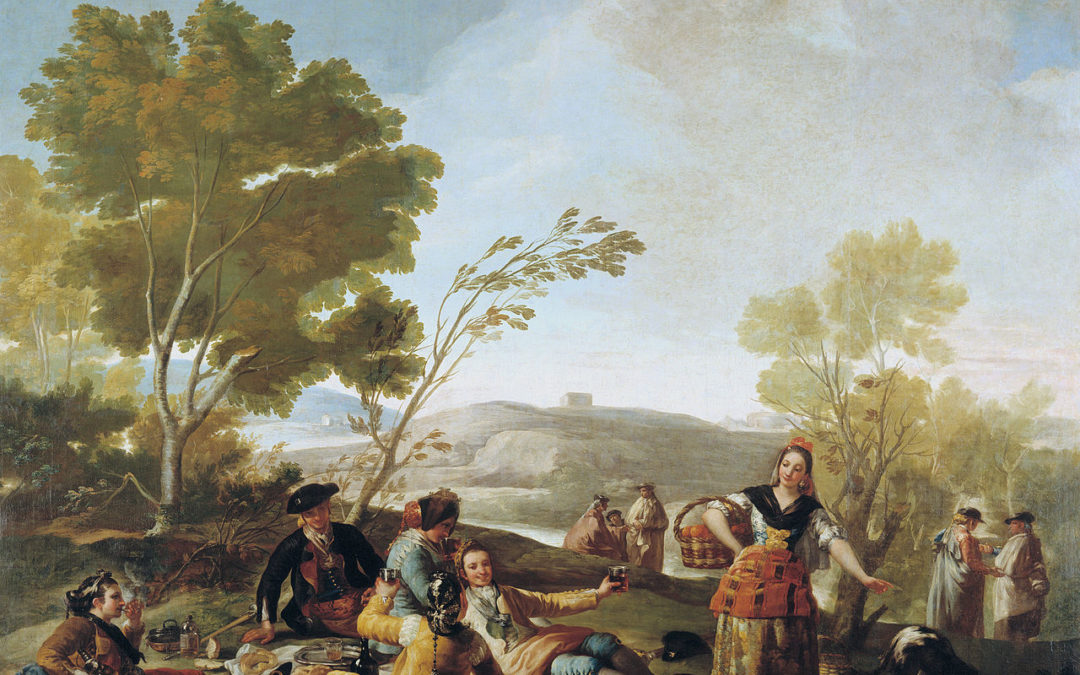 Merienda a orillas del Manzanares [Picnic At the Edge of the Manzanares River] is a painting for a tapestry intended for the dining room of the Prince and Princess of Asturias in the San Lorenzo Palace in Madrid. Goya described the subject as a merienda, a snack, or a...
Merienda a orillas del Manzanares [Picnic At the Edge of the Manzanares River] is a painting for a tapestry intended for the dining room of the Prince and Princess of Asturias in the San Lorenzo Palace in Madrid. Goya described the subject as a merienda, a snack, or a...










